August 5, 2025 by 100XBuilds Team
Marketing Attribution ROI: Multi-Channel Campaign Tracking
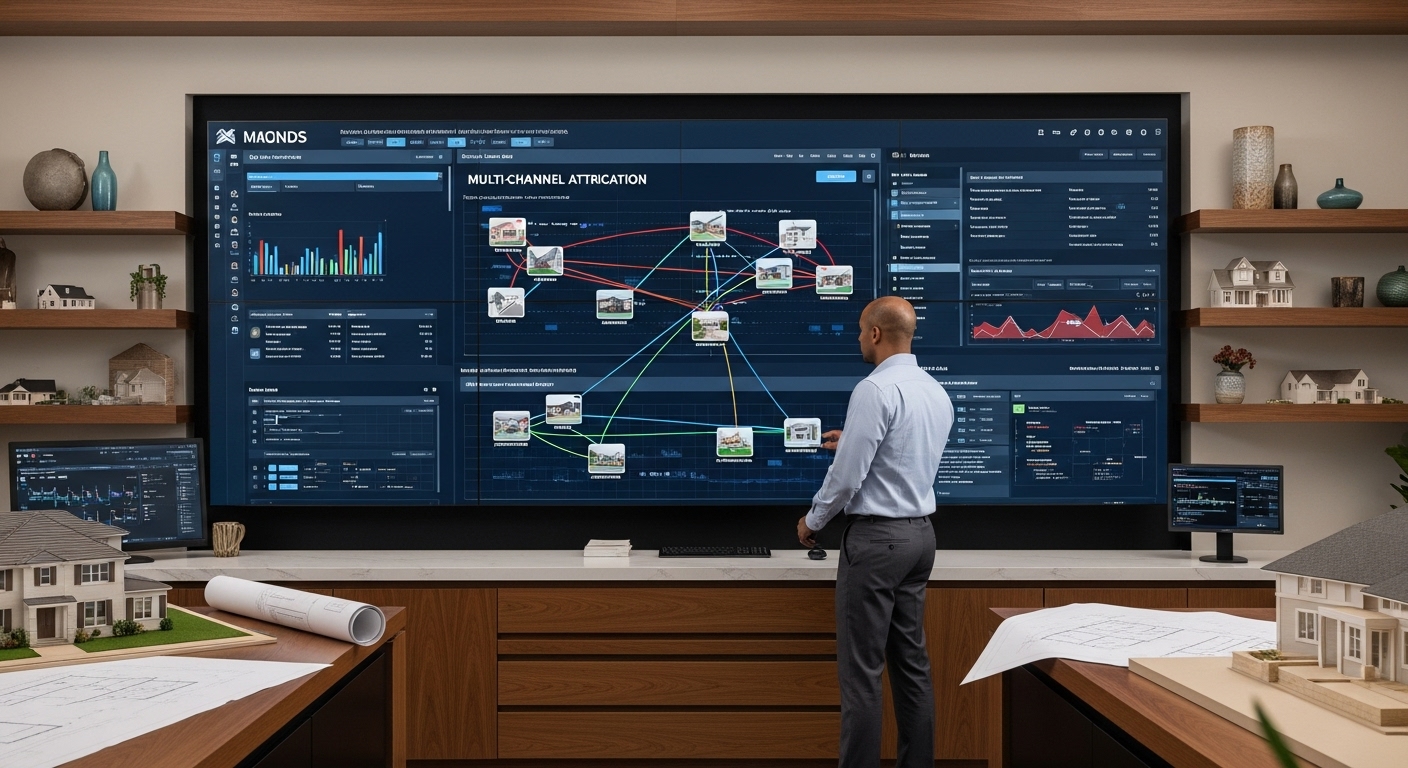
A $12M luxury builder recently discovered that 73% of their $2.8M annual marketing spend was being attributed to the wrong channels. Their "last-click" attribution model showed Google Ads driving most conversions, but advanced multi-touch analysis revealed that high-end magazine placements and architect referrals were actually initiating 68% of their qualified leads.
This misattribution cost them $847,000 in misdirected marketing budget over 18 months.
For luxury home builders managing complex, multi-year sales cycles with average project values exceeding $1.5M, understanding true marketing attribution isn't just helpful—it's the difference between 15% profit margins and 28% profit margins.
The Hidden Cost of Attribution Blindness
Most luxury builders operate with attribution models designed for e-commerce, not custom home construction. When your sales cycle spans 8-24 months and involves multiple stakeholders, traditional "first-click" or "last-click" attribution becomes dangerously misleading.
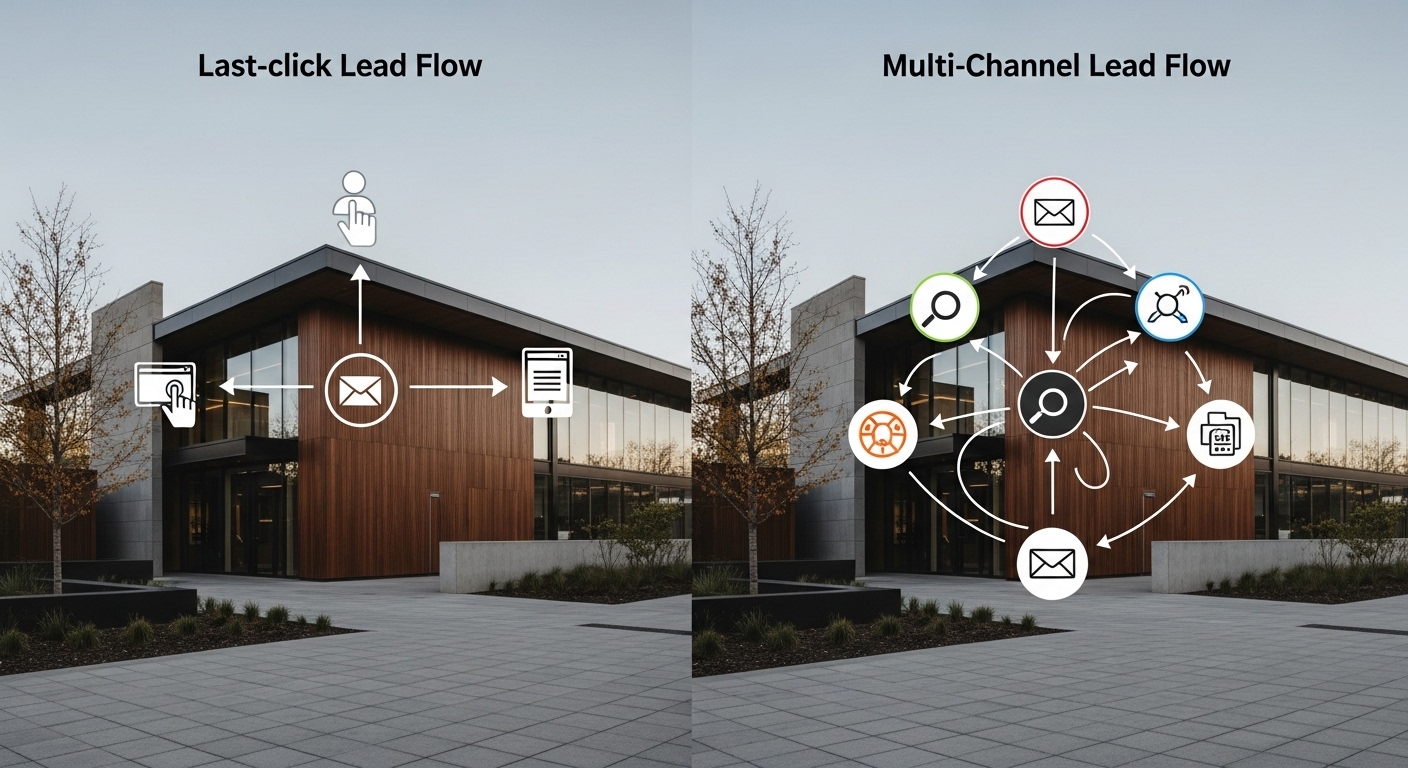
Consider this typical luxury buyer journey:
Month 1: Discovers builder through high-end lifestyle magazine ad
Month 3: Visits website after Google search for "custom home builders [location]"
Month 5: Downloads design portfolio after Facebook retargeting campaign
Month 8: Attends model home tour via email invitation
Month 12: Requests consultation after architect referral
Month 15: Signs contract after final sales meeting
Last-click attribution would credit the architect referral with the entire $2.3M sale. First-click would credit the magazine ad. Both miss the critical nurturing touchpoints that actually converted the prospect.
Advanced Attribution Models for Luxury Builders
Time-Decay Attribution
This model assigns increasing credit to touchpoints closer to conversion, recognizing that recent interactions often carry more weight in final decisions.
Implementation for builders:
- 40% credit to touchpoints in final 3 months
- 35% credit to touchpoints in months 4-9
- 25% credit to initial awareness touchpoints
A $8M builder using time-decay attribution discovered their architect partnership program (previously undervalued) was contributing 34% more qualified leads than their Google Ads spend suggested.
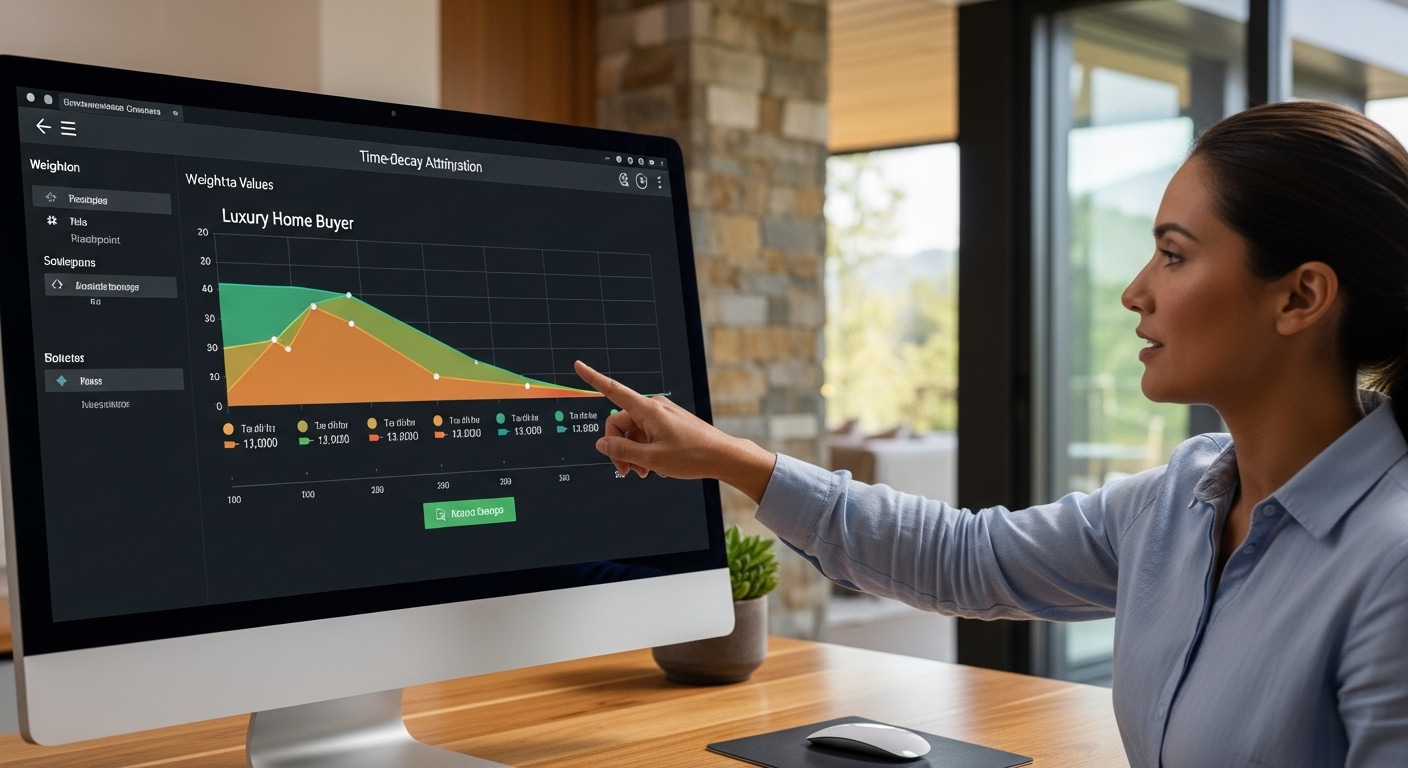
Position-Based (U-Shaped) Attribution
This model gives equal weight to first and last touchpoints (40% each) while distributing remaining credit across middle interactions.
Luxury builder application:
- First touch (40%): Brand awareness campaigns, referrals, high-end publications
- Middle touches (20%): Website visits, content downloads, email engagement
- Last touch (40%): Sales consultations, model home visits, final presentations
Custom Algorithmic Attribution
The most sophisticated approach uses machine learning to analyze your specific buyer patterns and assign credit based on actual conversion probability increases.
One $15M builder's custom model revealed:
- Architect referrals increased conversion probability by 340%
- High-end magazine ads increased probability by 180% when followed by website visit within 30 days
- Email nurture sequences increased probability by 95% for prospects who engaged with 3+ messages
Implementing Multi-Touch Attribution Systems
Essential Tracking Infrastructure
UTM parameter standardization across all channels:
Magazine ads: utm_source=architectural_digest&utm_medium=print&utm_campaign=spring2024
Referral programs: utm_source=architect_referral&utm_medium=referral&utm_campaign=partner_program
Email campaigns: utm_source=email&utm_medium=nurture&utm_campaign=portfolio_series
Cross-device tracking implementation:
- Customer ID matching across devices and platforms
- Phone call tracking with dynamic number insertion
- Offline conversion tracking for showroom visits and consultations
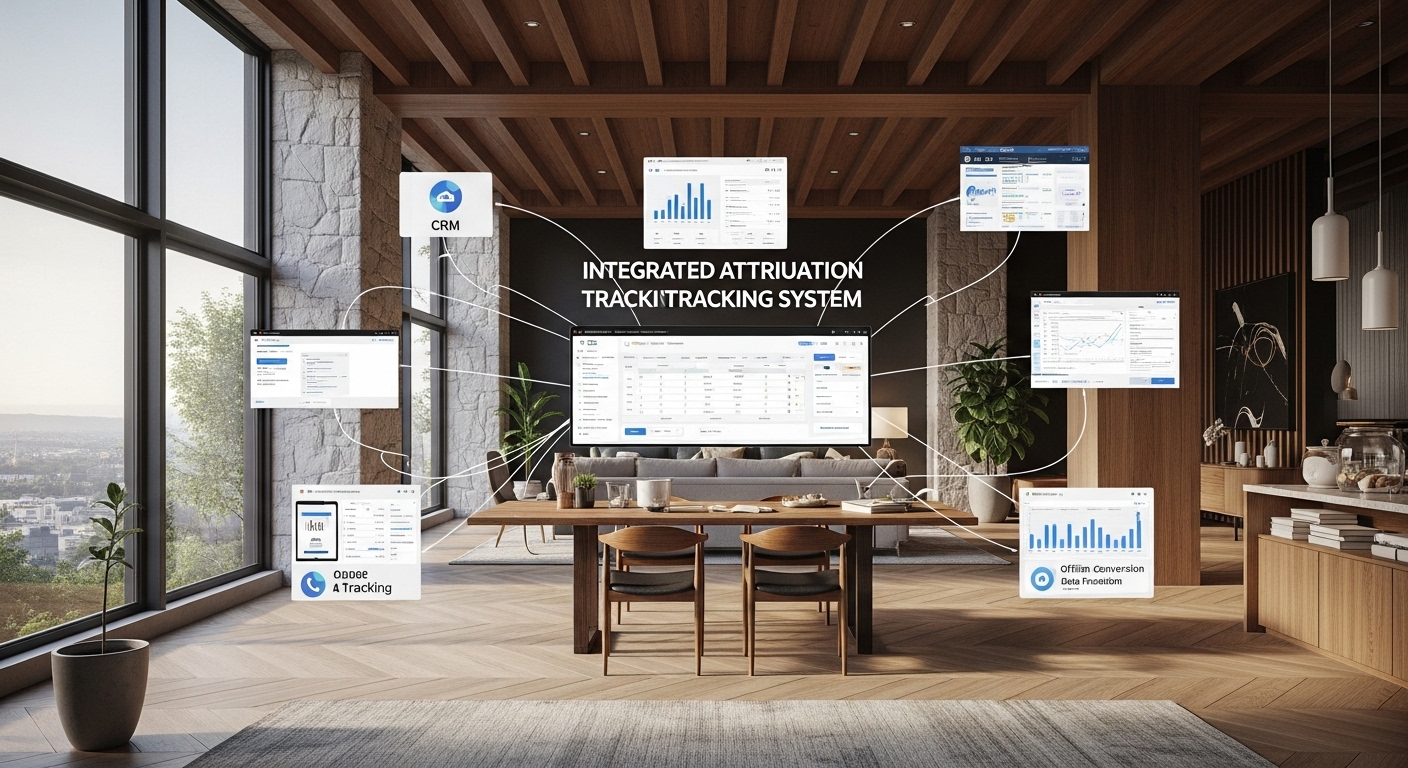
CRM Integration Requirements
Your attribution system must connect with your CRM to track the complete customer lifecycle:
Lead scoring integration: Assign point values based on attribution model insights
Sales stage tracking: Monitor how different acquisition channels perform through each sales phase
Revenue attribution: Connect final contract values back to originating touchpoints
Advanced Measurement Techniques
Incrementality testing: Run controlled experiments to measure true channel impact
A $10M builder ran incrementality tests on their Google Ads spend:
- Control group: No Google Ads exposure
- Test group: Full Google Ads exposure
- Result: Google Ads drove 23% incremental leads (not the 67% last-click attribution suggested)
Media mix modeling: Statistical analysis of how different marketing channels interact and influence each other
Cohort analysis: Track how attribution patterns differ across customer segments and time periods
Channel-Specific Attribution Insights
Digital Channel Attribution
Paid search performance:
- Brand terms: Often last-click but rarely first-touch
- Generic terms: Strong middle-funnel influence
- Local terms: High conversion probability increase
Social media attribution:
- Facebook/Instagram: Strong awareness and consideration influence
- LinkedIn: High-value lead quality but longer attribution windows
- Pinterest: Significant influence on design-focused prospects
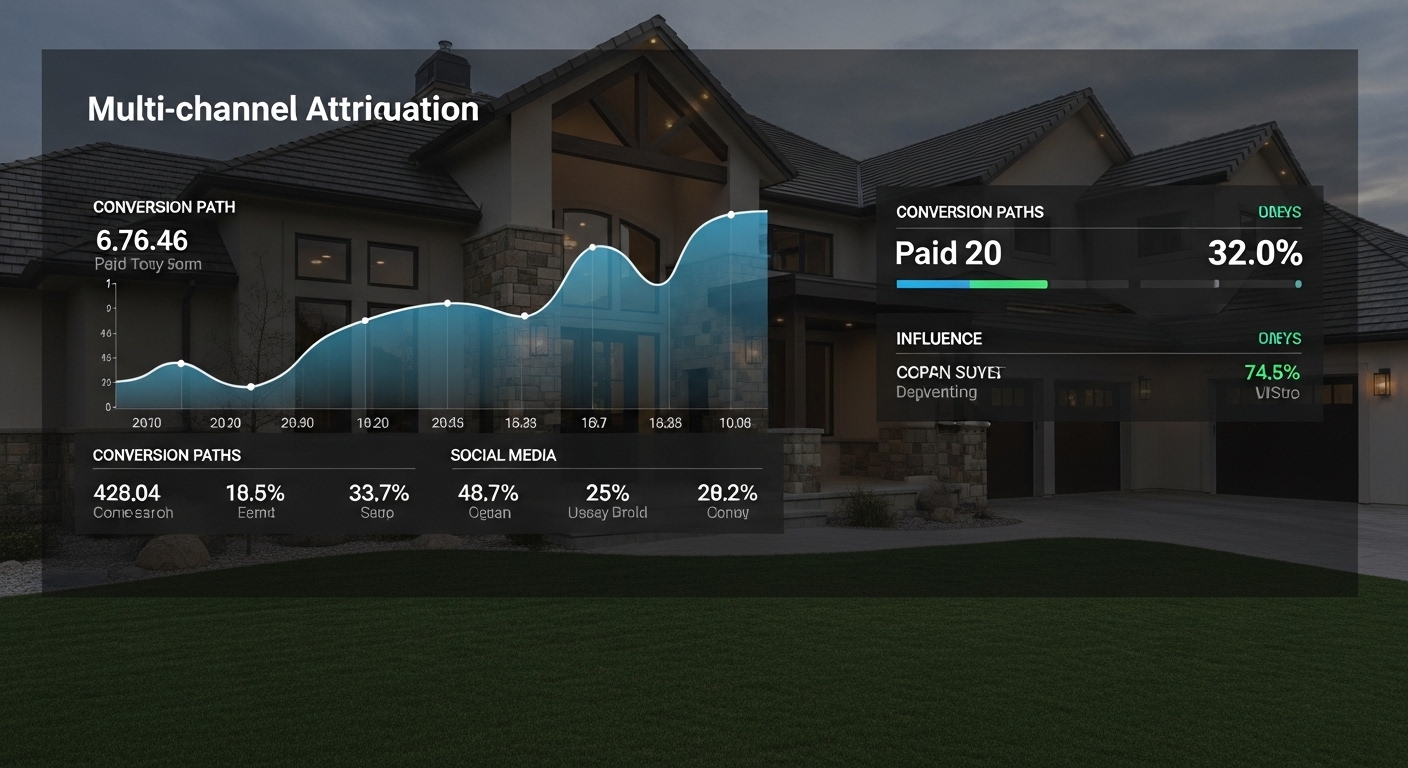
Traditional Channel Attribution
Print advertising measurement:
- QR codes and unique URLs for direct tracking
- Brand lift studies for awareness impact
- Survey attribution for offline influence
Referral program attribution:
- Partner-specific tracking codes
- Referral source documentation in CRM
- Lifetime value analysis by referral type
Event and showroom attribution:
- Event-specific lead capture
- Post-event engagement tracking
- Conversion rate analysis by event type
ROI Calculation Frameworks
Customer Lifetime Value Attribution
For luxury builders, single-project attribution misses the complete picture. High-end clients often build multiple homes or refer other high-value prospects.
True CLV calculation:
- Initial project value: $2.3M
- Referral value (3 referrals × $1.8M average): $5.4M
- Repeat business probability (25% × $2.1M): $525,000
- Total attributed value: $8.225M
Marketing Efficiency Metrics
Cost per attributed lead by channel:
- Google Ads: $340 per attributed lead
- Architect referrals: $180 per attributed lead
- Magazine advertising: $520 per attributed lead
Return on ad spend (ROAS) by attribution model:
- Last-click ROAS: 4.2:1
- Multi-touch ROAS: 6.8:1
- Custom algorithmic ROAS: 8.3:1
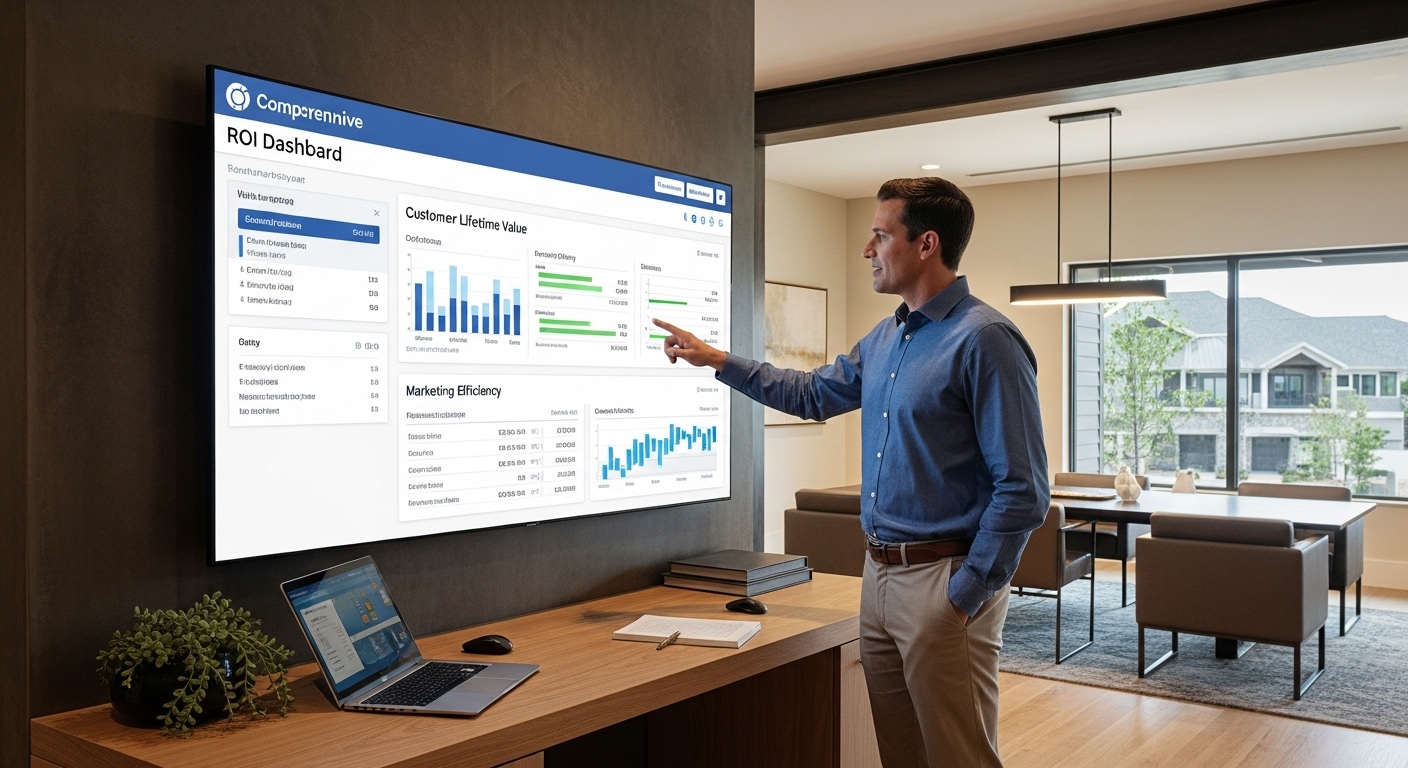
Technology Stack for Attribution Success
Essential Platform Integration
Analytics platforms:
- Google Analytics 4 with enhanced e-commerce tracking
- Adobe Analytics for enterprise-level attribution modeling
- Custom dashboard solutions for real-time attribution insights
Attribution software:
- Bizible (now Marketo Measure) for B2B attribution
- Attribution.io for custom model development
- HubSpot Attribution Reporting for integrated CRM solutions
Call tracking integration:
- CallRail for dynamic number insertion
- DialogTech for conversation analytics
- Invoca for AI-powered call attribution
Data Warehouse Requirements
Effective attribution requires centralized data storage:
Customer data platform (CDP) implementation:
- Unified customer profiles across all touchpoints
- Real-time data synchronization
- Privacy-compliant data management
Data visualization tools:
- Tableau for advanced attribution analysis
- Looker for real-time attribution dashboards
- Power BI for integrated Microsoft ecosystem reporting
Common Attribution Pitfalls and Solutions
The "Dark Social" Problem
Up to 40% of luxury home buyer research happens through private channels (direct messages, private social groups, word-of-mouth) that traditional attribution can't track.
Solution strategies:
- Survey-based attribution for offline influences
- Brand lift studies to measure dark social impact
- Referral tracking programs with incentive structures
Cross-Device Attribution Challenges
Luxury home buyers research across multiple devices over extended periods.
Implementation approach:
- Customer ID matching across platforms
- Probabilistic device linking
- Survey data to validate cross-device behavior

Attribution Window Optimization
Standard 30-day attribution windows miss most luxury home buyer journeys.
Recommended windows by channel:
- Paid search: 90 days
- Social media: 120 days
- Print advertising: 180 days
- Referral programs: 365 days
Measuring Attribution Model Performance
Model Validation Techniques
Holdout testing: Reserve 20% of data for model validation
Cross-validation: Test model performance across different time periods
Business outcome correlation: Verify that attribution insights align with actual business results
Continuous Optimization Framework
Monthly attribution reviews:
- Model performance assessment
- Channel credit redistribution analysis
- Budget reallocation recommendations
Quarterly model updates:
- Incorporate new data sources
- Adjust attribution windows based on sales cycle changes
- Update channel interaction effects
Annual attribution strategy review:
- Complete model architecture evaluation
- Technology stack optimization
- ROI measurement methodology refinement
Advanced Attribution Applications
Predictive Attribution Modeling
Use historical attribution data to predict future campaign performance:
Lead scoring enhancement: Incorporate attribution insights into lead qualification
Budget forecasting: Predict ROI based on attribution model insights
Channel optimization: Identify optimal marketing mix based on attribution analysis
Competitive Attribution Intelligence
Market share attribution: Understand how your attribution patterns compare to market benchmarks
Competitive response modeling: Predict how attribution patterns change based on competitive activity
Channel saturation analysis: Identify when additional spend in specific channels yields diminishing returns
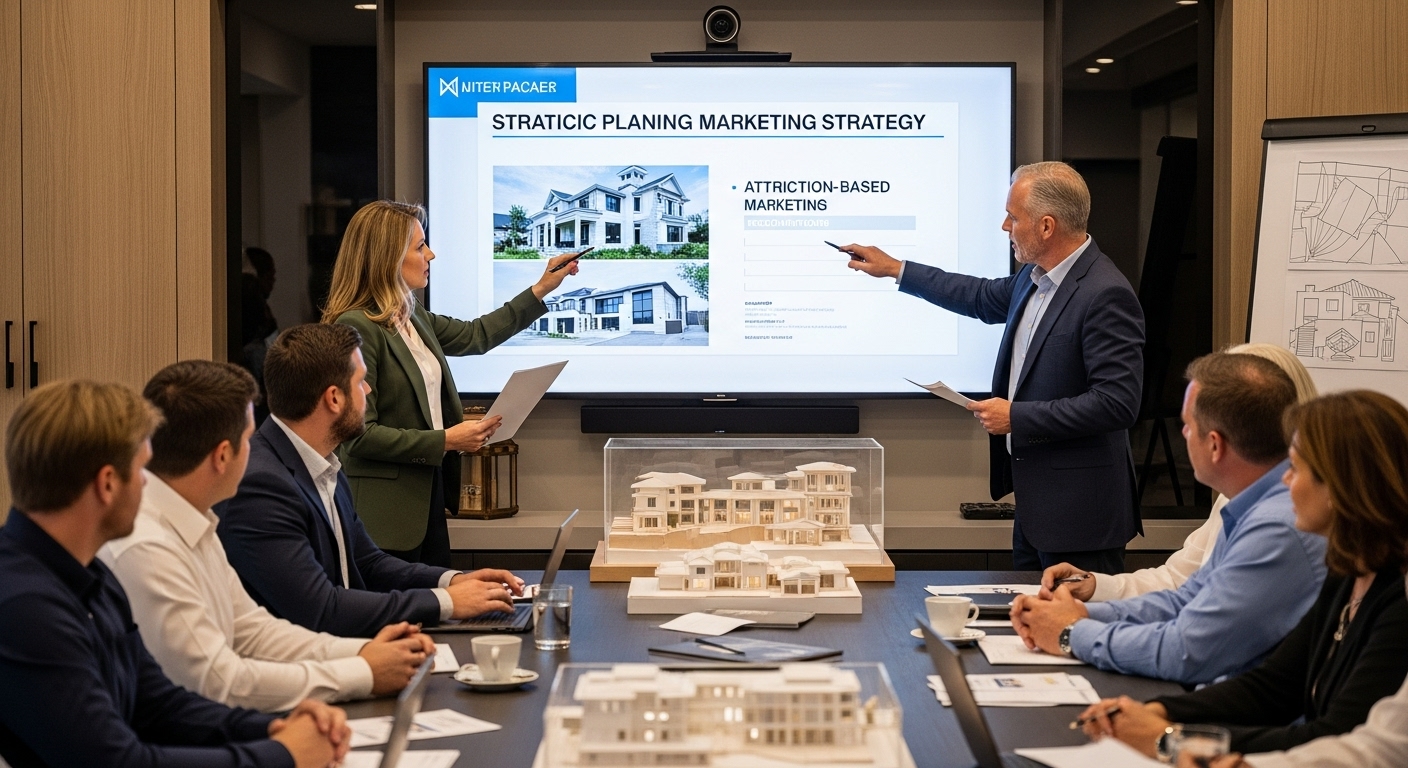
The luxury home building industry's complex sales cycles demand sophisticated attribution approaches. Builders who master multi-touch attribution consistently achieve 25-40% higher marketing ROI than those relying on simple attribution models.
Your attribution model should evolve with your business. Start with time-decay or position-based models, then advance to custom algorithmic approaches as you gather more data and refine your measurement capabilities.
Ready to implement advanced attribution modeling that reveals your true marketing ROI? Our marketing automation specialists help luxury builders develop custom attribution systems that drive measurable profit increases. Schedule your attribution strategy consultation to discover how proper measurement can transform your marketing efficiency.
